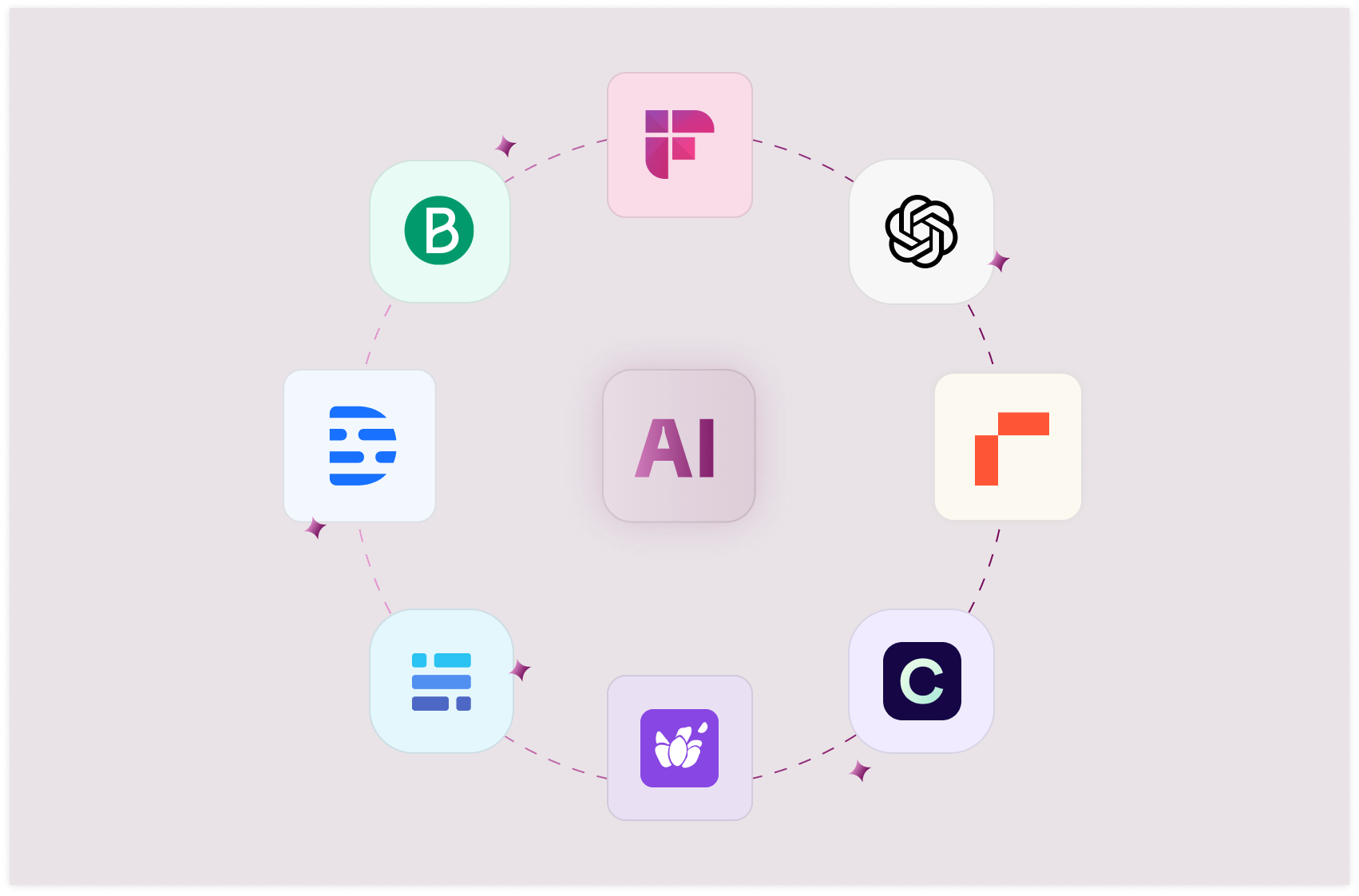10 Best Data Aggregation Tools to Try Out in 2025

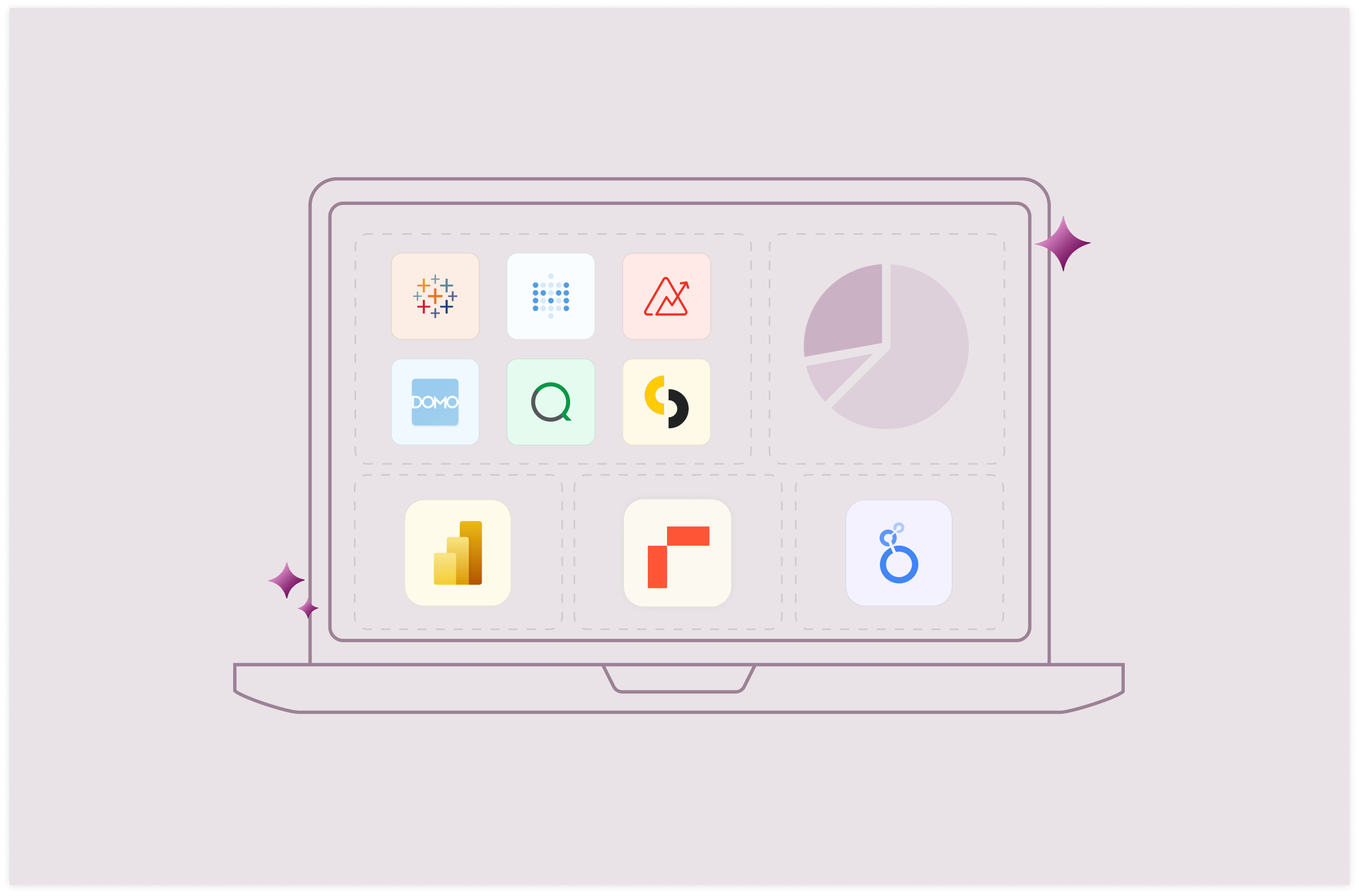
There's a tsunami of data in different industries—from social media metrics to supply chain logistics and healthcare patient records to financial market indicators. And many companies are struggling to aggregate the data pool in their industry. This inefficient data management is sucking resources faster than a financial black hole.
So, if you are drowning in data, we've gathered the 10 best data aggregation tools. With these tools, you can get quality insights to drive informed decisions faster and more efficiently in your company.
Factors to Consider When Choosing a Data Aggregation Tool
Flashy features don't always translate to real-time value. A data aggregation tool must offer value beyond just collecting data from sources. Below are a few factors to note before you purchase that data aggregation tool. We've made it even better by framing the factors as questions.
Will It play nice with your existing tech stack?
It's possible your tech stack is complex, and you can't afford a tool that plays lone wolf. This means you need a data aggregation tool that offers seamless integration with your existing systems - from your legacy databases to AI platforms. API robustness is crucial; projects fail due to poor API documentation or limited connectivity.
Does it ingest data easily?
Data ingestion is the process of importing or processing data from multiple sources into a spreadsheet.
Modern teams’ tech stack includes tools that handle data from various sources. Ingestion is one of the most important factors to consider when choosing data aggregation software. Any software you choose must be able to ingest data automatically, not just with copy/paste or import file functionality.
How does it ensure data quality?
54% of businesses cite data quality and completeness as their largest marketing data management challenge. The best aggregation tool in the world is worthless if it can't help ensure data quality. Look out for a tool's robust data cleansing, validation, and enrichment capabilities.
Does the tool foster collaboration or create data silos?
Can I collaborate with the marketing manager on this spreadsheet? Can I share data without hassle? You have to value tools that facilitate collaboration between our teams. Features like shared dashboards, annotation capabilities, and version control can significantly enhance your analytical workflow.
Is the tool easy to maintain?
Most tools are wallowing in the realm of ages past. Data types are emerging, and AI is impacting the business landscape. Find out if the tool has the flexibility to adapt to emerging data types. And, importantly, ask if it is positioned to incorporate AI and machine learning capabilities.

Build better dashboards faster
Aggregate and visualize live data from 50+ sources, automate analysis with AI and share it interactively with your team.
Try Rows for FreeWhat are the best data aggregation software?
Rows
Microsoft Power BI
Tableau
Zoho Analytics
Domo
Looker
Qlikview
Metabase
Sisense
Alteryx
1. Rows
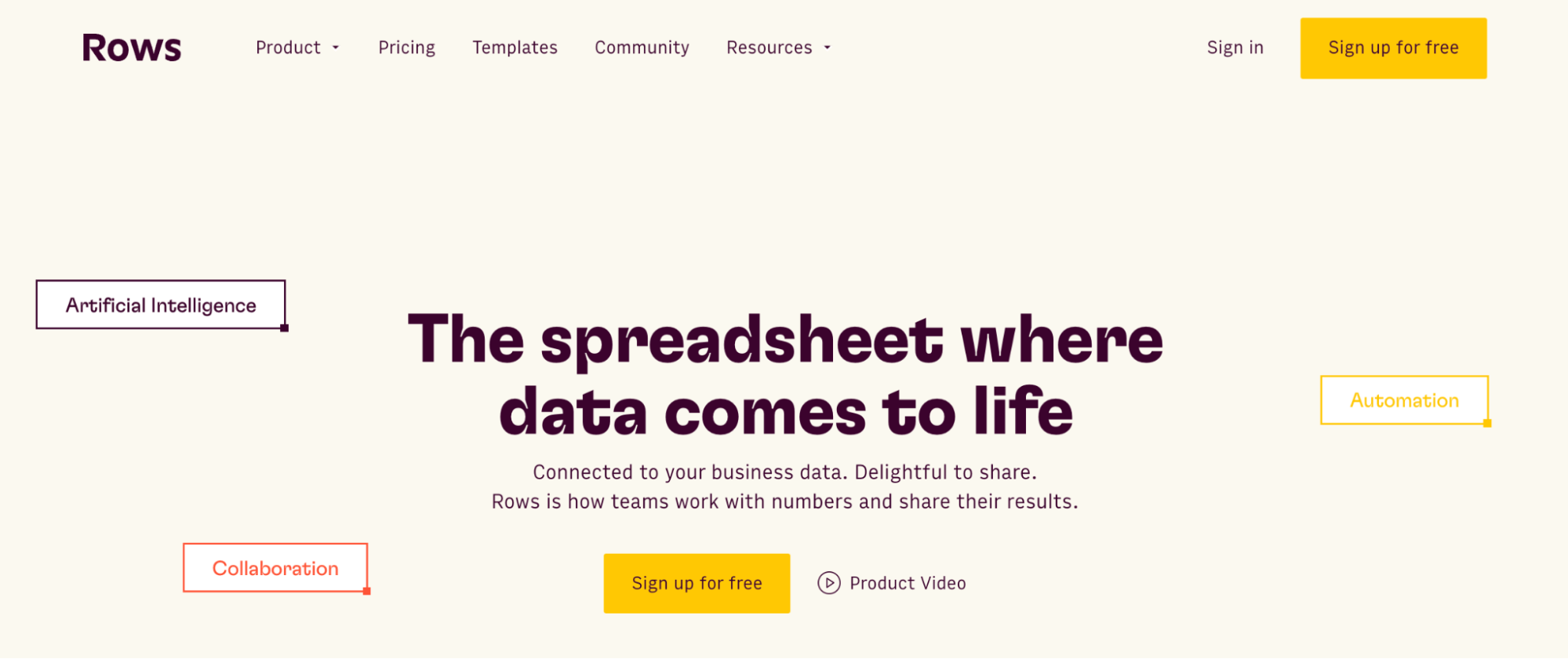
At the top of our list is our spreadsheet editor, which goes beyond traditional spreadsheets. It allows users to create visually appealing charts, connect to various data sources without coding, and collaborate in real time.
Rows provides built-in functions to help you aggregate data. You can calculate sum, average, count, min, and max across rows and columns.
In the context of data aggregation, 3 Rows features stand out:
Rows Top Features
50+ built-in data sources integrations in various domains
As mentioned, you must choose a data aggregation software with multiple built-in integrations. Rows boast over 50+ integrations across different facets like marketing, data warehouse, etc.
This saves your time and reduces your team's stress. With Rows, you can gather data from various sources in your system. This allows for more detailed analyses and helps your team uncover insights they might miss.
Here's a division of the built-in integrations in Rows:
Marketing: GA4, GSC, Facebook, Instagram, Tiktok
Productivity software: OpenAI, Notion, Slack, Email, Translate
Data warehouse: MySQL, BigQuery, PostgreSQL, Snowflake, Amazon Redshift
Discover the full catalog here.
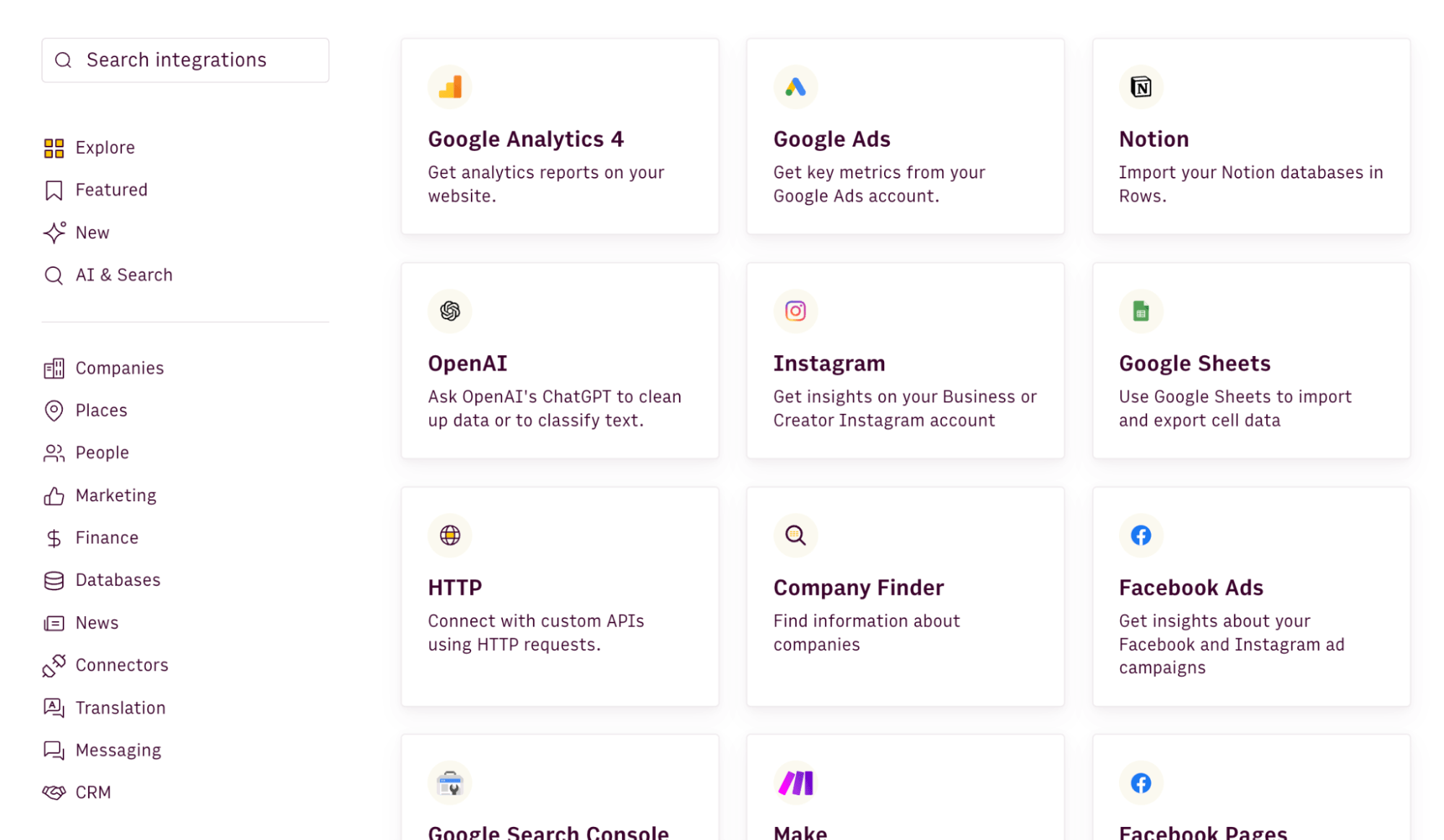
You also have the possibility of creating custom connections via our HTTP functions.
💡 Pro tip: When the tool you’re working with isn’t listed in our catalog, HTTP functions allow you to connect to any RESTful API, GraphQL endpoint, or other HTTP-based data sources, regardless of their structure or authentication methods. On Rows, GET, POST, PUT, and PATCH make the catalog of integrable tools virtually infinite.
Try out our HTTP tester below:
Data Visualization
On Rows, WYSIWYG: the spreadsheet IS the dashboard. And you can drag tables and charts to reorder them accordingly without stress.
However, if something breaks, you have a quick and easy flow to check parameters and reset, like in any regular spreadsheet.
Plus you can Embed any table and chart dynamically into Notion, Confluence, Slite, Miro or any other HTML-ready tool.
Easy manipulation
Rows is easy to use as it employs familiar spreadsheet features to transform and manipulate data. It also has a low steep learning curve compared to tools like Looker or Metabase. Setting up is easy, and maintaining your dashboard even gets better. Here are a few functions that make it easy:
Data is retrieved by regular credentials authentication.
Each table can be automated via a scheduled refresh.
Data is rendered as regular spreadsheet tables and not in a complex format. Here are some common features on the spreadsheet:
If you want to make a chart out of data coming from, e.g., GA4 you can do it just on any regular spreadsheet
If you want to add a column in any table with metric that is not included in the data source, you do it as in any spreadsheet table, using familiar functions and feature
If you want to apply specific (conditional) formatting, or freeze a row, or whatever, you do so as in any regular spreadsheet
If you want to create a pivot table, same as above
If something breaks, you have a quick and easy flow to check parameters and reset.
Rows Pricing
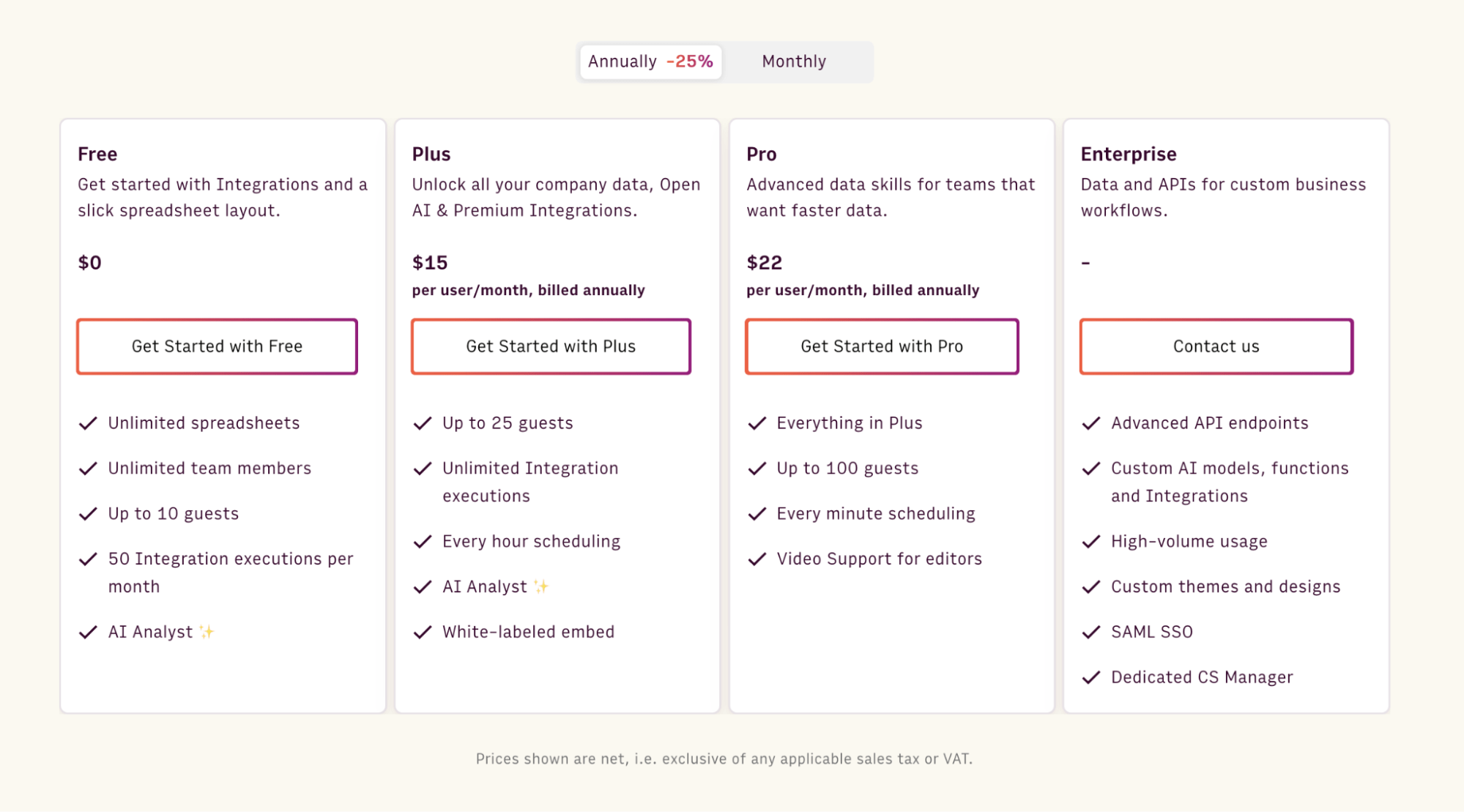
Rows offers a free forever plan that’s quite generous. It lets you onboard unlimited members and up to 10 guests and execute up to 50 integration tasks per month.
If you want to get rid of these limits and want access to more premium features, Rows has three paid plans to choose from:
Plus: $15/month/member, up to 25 guests, unlimited integration tasks & daily data refresh.
Pro: $22/month/member, up to 100 guests, unlimited integration tasks & hourly data refresh.
Enterprise: Custom price for advanced API usage and workflows.
Pros and Cons
✅ Has more than 50 native integrations.
✅ Easy to analyze and visualize data, especially for non-data-friendly users.
❌ Doesn’t have an offline app
$BLOG_CTA$
2. Microsoft Power BI

Microsoft Power BI is a business intelligence platform that provides tools for aggregating, analyzing, visualizing, and sharing data. It allows you to connect to various data sources, transform the data, and build interactive dashboards and reports. Its intuitive, Excel-like interface empowers business users to create visuals with little training.
Power BI Top Features
With its Power Query, you can connect to many different data sources and transform the data into your desired shape. It has a petabytr-scale data storage and processing capabilities.
Data Analysis Expressions (DAX) is a library of functions and operators on Power BI that can be combined to build formulas and expressions.
Power BI offers a range of visualizations, such as bar charts, column charts, line charts, area charts, pie charts, and donut charts.
Power BI’s Pricing

Free forever plan
Power BI Pro: $10/month
Power BI Premium Per User: $20/month
Pros and Cons
✅ Excel integration
✅ Regular updates
❌ Steep learning curve
❌ DAX function complexity
3. Tableau

Tableau is interactive data visualization software connecting almost any database by drag-and-drop. Users can create visualizations and share them with a click.
In Tableau, you can aggregate measures or dimensions. Tableau automatically aggregates its values when you add a measure to the view. You can also perform functions like SUM, AVG, and COUNT.
Tableau’s Top features
Tableau allows aggregating dimensions. Available aggregations for dimensions include minimum, maximum, count, e.t.c
You can disaggregate data on Tableau. So, instead of an aggregated summary, you get a separate mark for each measure.
Tableau calculates medians and COUNTD (counts the distinct number of values).
Tableau's Pricing

Tableau Desktop: $70/month
Tableau server: $35/month
Tableau Explorer: $42/month
Tableau viewer: $15/month
Pros and cons
✅ Data visualization
✅ Broad data source connectivity
❌ Security limitations
4. Zoho Analytics

Zoho Analytics is a business intelligence and data visualization platform that provides businesses with insights to make informed decisions.
Like Tableau, Zoho analytics allows the creation of aggregate formulas that use aggregate functions like SUM, AVG, and COUNT to perform calculations on a data set.
Zoho Analytics Top Features
Zoho Analytics supports integration with numerous data sources like MySQL, Oracle, Google Drive, Salesforce, etc.
Automated data synchronization is available to help you update data from connected sources.
Zoho Analytics offers “Group by Shifting expressions “ to control how data is aggregated.
It had a set of pre-built aggregate metrics, just like other tools.
Zoho Analytics pricing

Free forever plan
Basic plan at $30 per month
Standard plan at $60 per month
Premium plan at $125 per month
Pros and cons
✅ Good data visualization
✅ User friendly
❌ Limited customization for advanced users
❌ Steep learning curve
5. Domo

Domo is a cloud-based business intelligence and data visualization platform.It enables organizations to aggregate data from multiple sources and generate interactive visualizations.
Domo’s Top Features
Domo offers 1000+ pre-built connectors to integrate data from various business applications. This is the highest number of connectors per tool compared to others on the list.
Domo's ETL (Extract, Transform, and Load) helps you extract extra data from sources, transform it, and load it into Domo.
Domo includes time-based functions that make it easy to calculate running totals, averages, growth rates, and time differences over standard or custom time periods.
Domo aids cross-collaboration across teams, making it easier to share insights.
Domo’s Pricing
Domo offers a credit-based pricing model. The pricing is not based on the number of users. However, they have a free 30-day trial plan.
Pros and cons
✅ 1000+ integrations
✅ Drag-and-drop interface
❌ Not affordable for small teams
❌ The prices are not available on their site, which may be a turn-off for aspiring users
6. Looker

Looker’s Top Features
Looker Studios can connect to your database, Google products, and social media platforms to transfer data. It allows you to blend multiple data sources, which can help work around limitations with auto-aggregation in some sources like Google Analytics.
With tables and pivots on the dashboard, you can see displayed aggregated data in rows and columns.
Looker Studio helps create calculated fields that leverage aggregate functions, just like the above-mentioned tools.
Looker’s Pricing
Looker Studio is free to use. It has an enterprise version called Looker Studio Pro, but the pricing plan is not specified.
Pros and cons
✅ Easy-to-use web interface
✅ Convenient templates
❌ Lagging issues
7. Qlikview

Qlikview is a business intelligence and data visualization software. It allows you to aggregate, analyze, and visualize data from various sources. It is Qlik’s legacy on-premises product.
Qlikview’s Top Features
A standout feature of Qlikview is its “associative data model,” which establishes relationships between different data source systems.
Like every tool on the list, Qlikview allows users to integrate and combine data from multiple sources, including databases and spreadsheets.
It offers various data visualization options, including charts, graphs, tables, and dashboards.
Qlikview's Pricing
The price is not publicly available.
Pros and Cons
✅ Intuitive data exploration
✅ Mobile and offline access
❌ Unhelpful Customer Support
❌ Recurring Error 429
8. Metabase
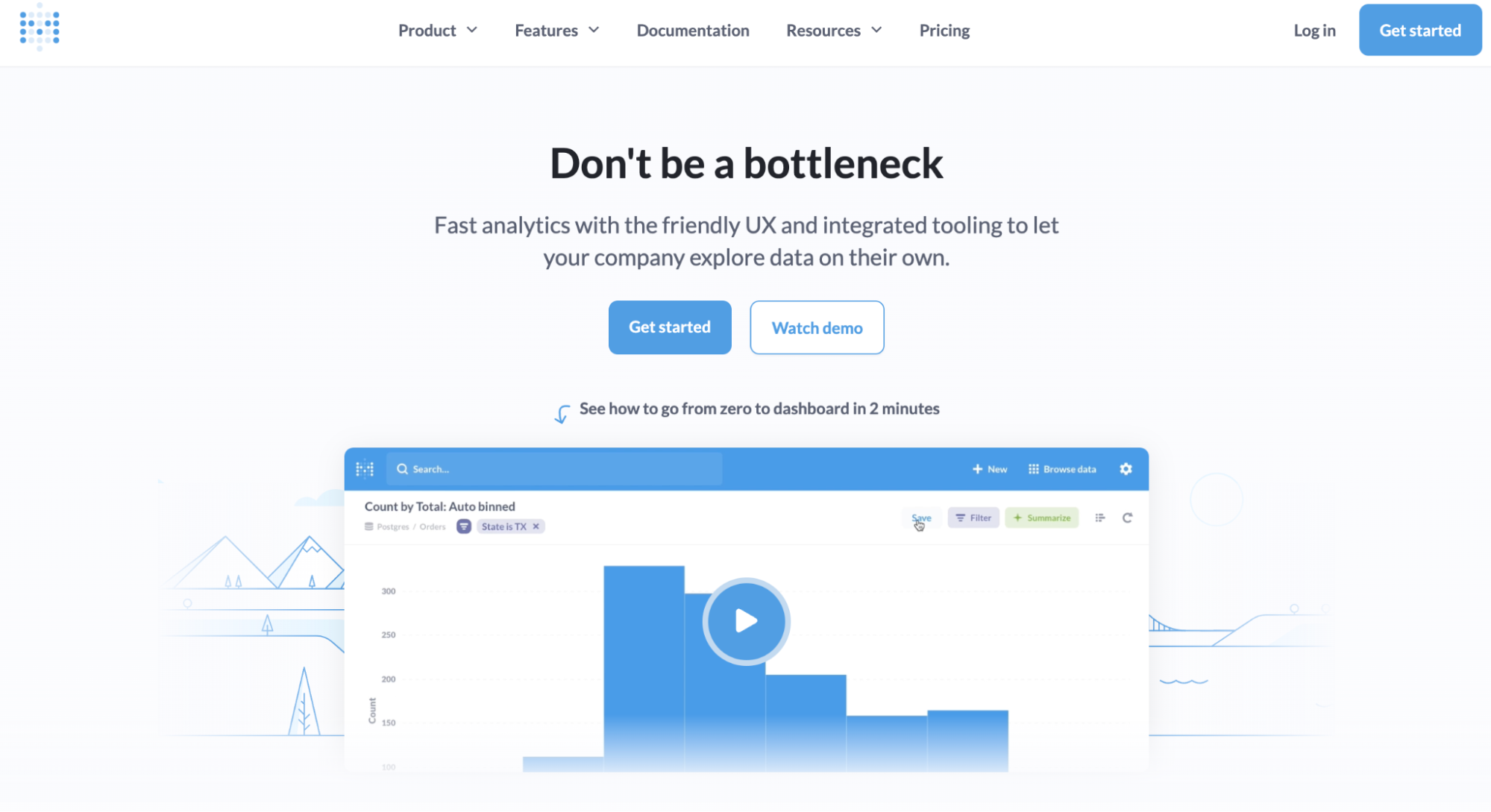
Metabase is fast data analytics with a friendly UX and integrated tooling that lets your company explore data independently.
Metabase's Top Features
Free your data from the confines of SQL with Metabase’s visual query builder.
Easily create and share interactive dashboards, from TB-scale analytical workloads to day-to-day operational workflows, with 15+ visualization types.
Craft metadata-rich, semantic models that let people query on their own, keeping things consistent and avoiding repetition. With a single tab open, no CLI is needed.
Metabase's Pricing
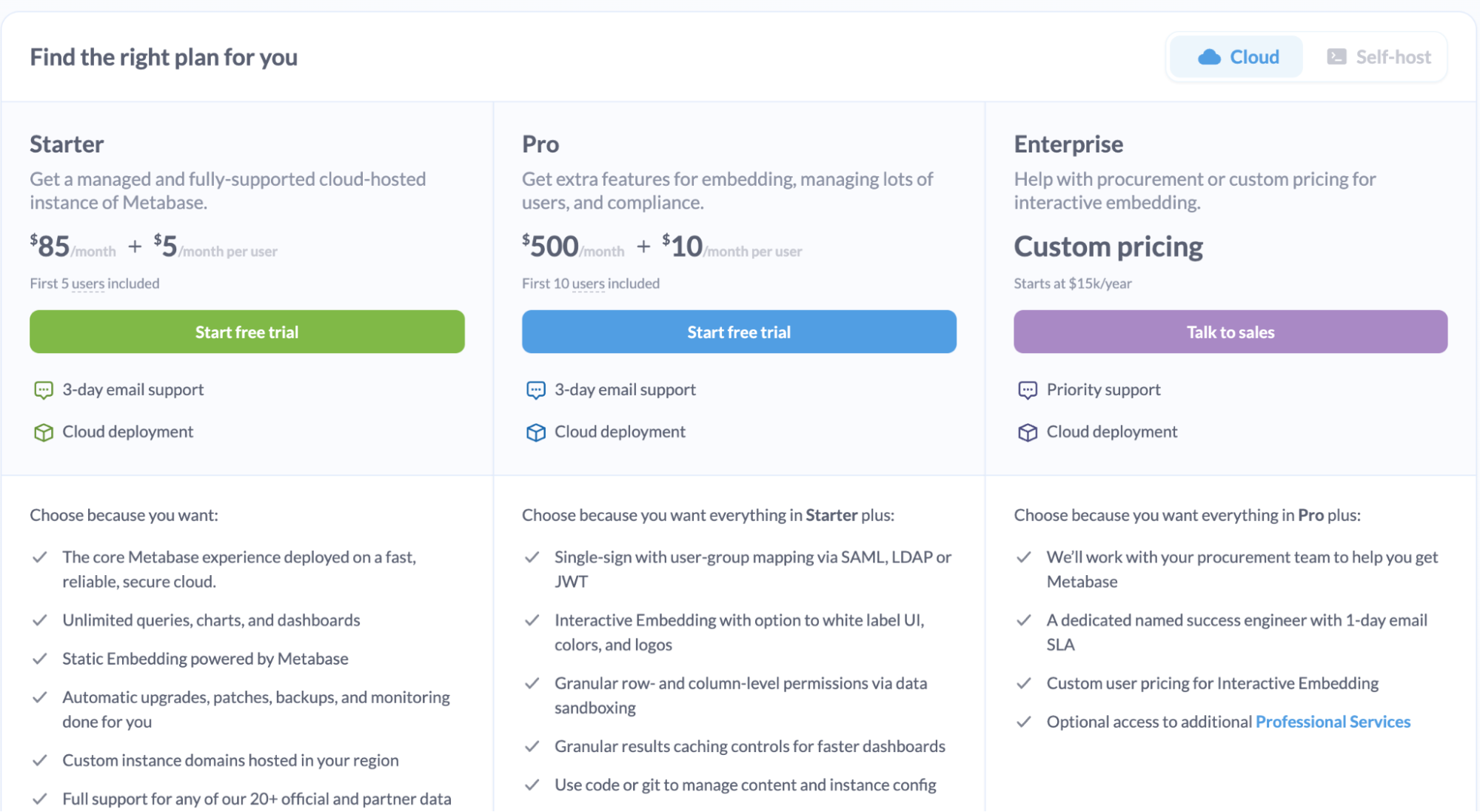
Metabase starter: $85/month + $5/month
Metabase Pro: $500/month + $10/month per use
Pros and cons
✅ Assistance in writing SQL queries
✅ Self-service analytics
❌ It is not affordable
❌ Limited Visualization Abilities
9. Sisense

Sisense is AI-powered analytics software with pro-code, low-code, and no-code capabilities. With Sisense Fusion and Compose SDK, you can build advanced analytics, deliver dynamic and personalized insights, and delight end-users.
Sisense’s Top Features
Among the tools on our list, Sisense comes close to what we have at Rows. Its top analytics use cases are to recommend places to begin data exploration, augment analytics, conversationally query data, and achieve narrative answers. However, it's still in beta.
Sisense offers several ways to help you manage your data security and governance and maintain HIPAA compliance. One key tool is our Add-Ons (called “Plug-Ins”) certification process.
Sisense allows you to apply a dashboard-wide "aggregation" filter to display data aggregated at different time intervals, such as daily, weekly, or monthly. This makes it easy to update the aggregation level across all charts in the dashboard.
Sisense’s Pricing
There's no available pricing on the site.
Pros and cons
✅ Very fast because of its chip methodology
✅ Great visualization
❌ Instability of the data cubes, runs, and failures.
❌ Not Affordable
10. Alteryx
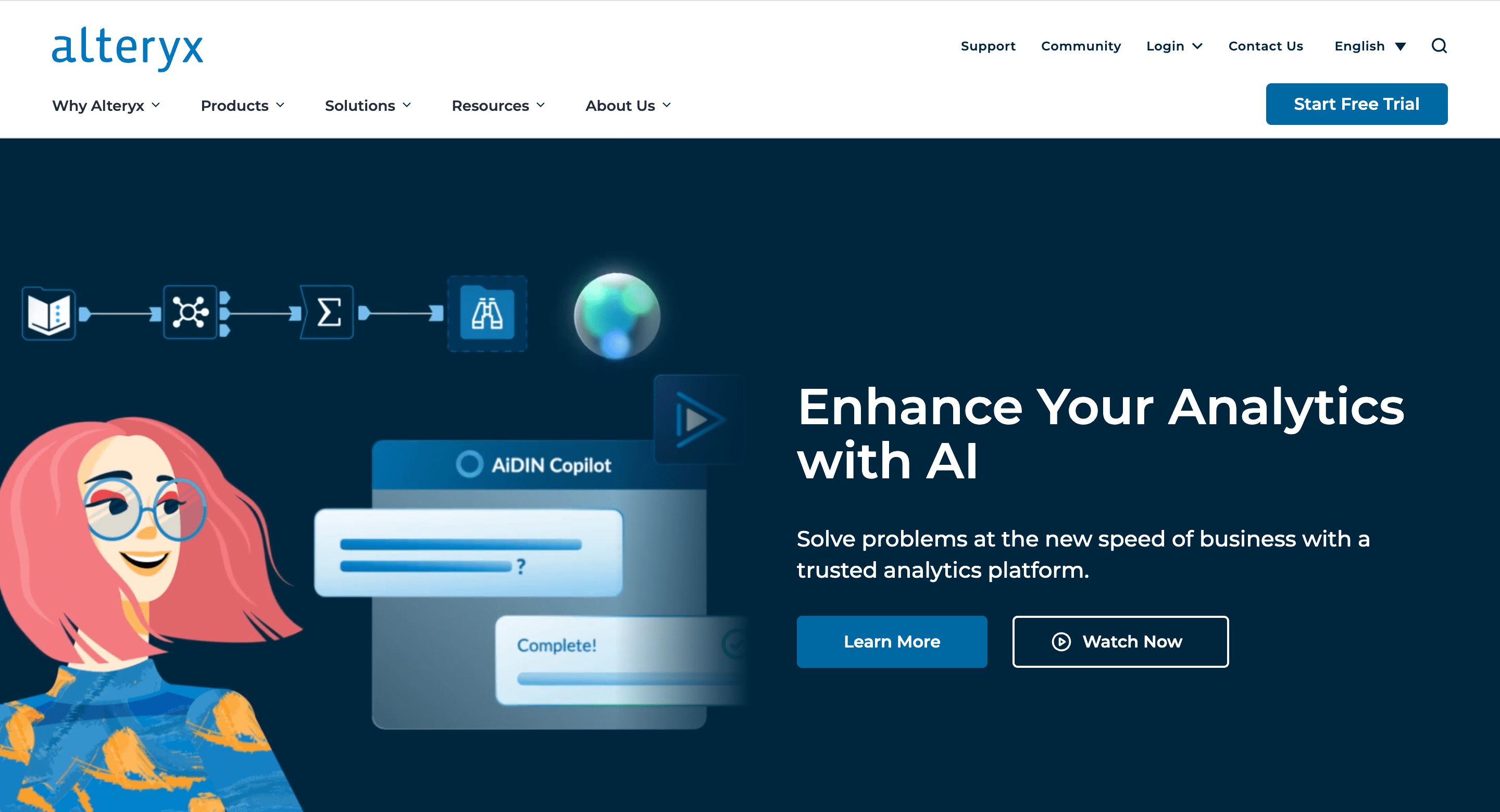
Alteryx is a data analytics platform that helps organizations to gather, blend and analyze data from different sources.
Alteryx Top Features
Alteryx integrates with various reporting and visualization tools, such as Tableau and Power BI to present aggregated data.
It has built-in visualization capabilities such as charts, graphs, and maps. Users can create data aggregation workflows using a drag-and-drop interface, without coding. This makes it easy to design and automate complex aggregation tasks
You can automate data aggregation, from data preparation to reporting.
Alteryx Pricing
Alteryx’s pricing plan is not available on their site.
Pros and cons
✅ Intuitive user interface
✅ Workflow automation
❌ Pricing opacity
❌ Dependency on open source

Build better dashboards faster
Aggregate and visualize live data from 50+ sources, automate analysis with AI and share it interactively with your team.
Try Rows for FreeFAQs about Data Aggregation
What is Data Aggregation?
Data aggregation involves gathering data from various sources and compiling it into a spreadsheet to extract and summarize it into a more easily understandable format. What are the types of data aggregation?
What are the best data aggregation tools in 2025?
The best data aggregation tools include Rows, Power BI, Tableau, Zoho analytics, Domo, Looker, Qlikview, Sisense, Alteryx, and Metabase.
What are the best practices to execute when using data aggregation tools?
Validate every result you get from your data aggregation software.
Consider the data privacy of your software and speak to your team on how they can go about when importing data. This is more reason you should use a tool with strong data privacy like Rows.com.
Standardize your company’s ata formats across sources to facilitate accurate aggregation.
Regularly update and maintain your data aggregation processes.
Data comes to life with Rows.com
We've reviewed the best 10 data aggregation tools to try out in 2025. These tools match the checklist of features specific to data aggregation. However, some are complex to use and require engineering set-up—for example, Tableau, while powerful, tends to have a steeper learning curve for beginners due to its extensive features.
This means you need to opt for a tool that's easy to use and manipulate, like Rows. It's worth noting that most tools are not transparent with their pricing—this might mean you need to pay high fees beyond your budget.
With Rows, data comes to life. And the sweet part is that we have an AI analyst to do the trench work for you. If you or your team don’t have the time to try every product on our list, go to Rows.com, import data, automate your report, and see if it's the right match!

